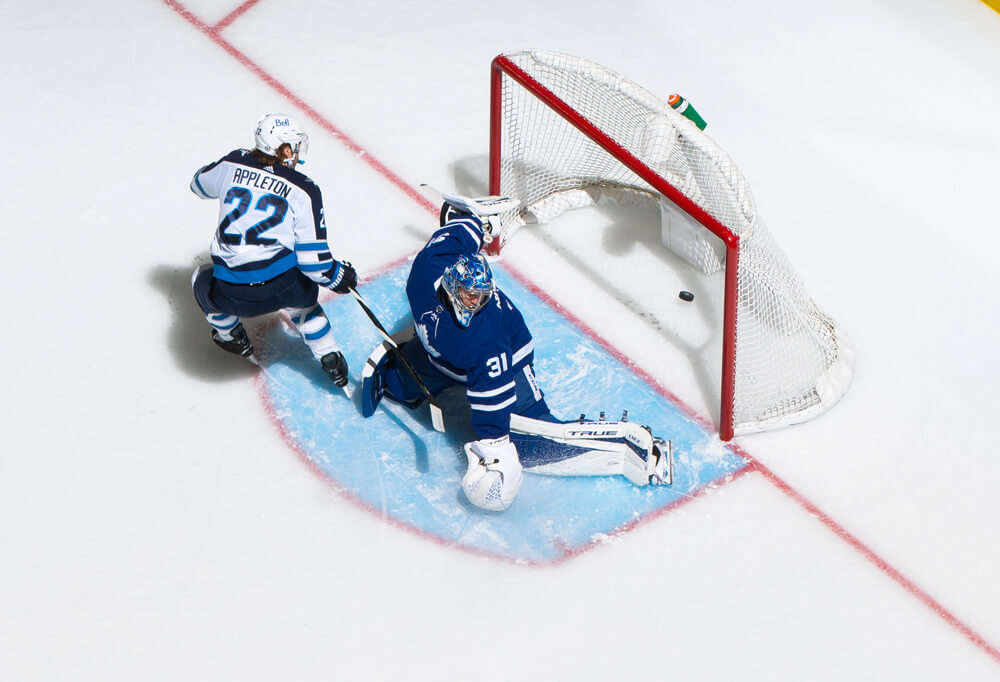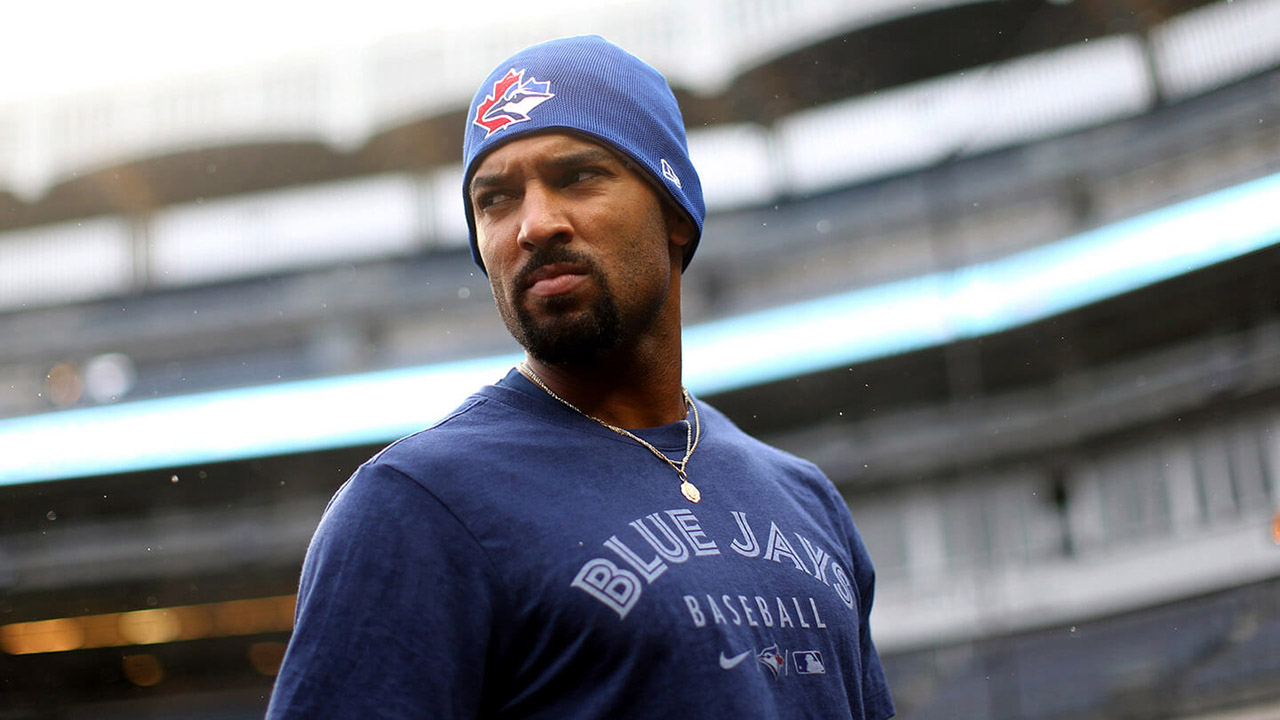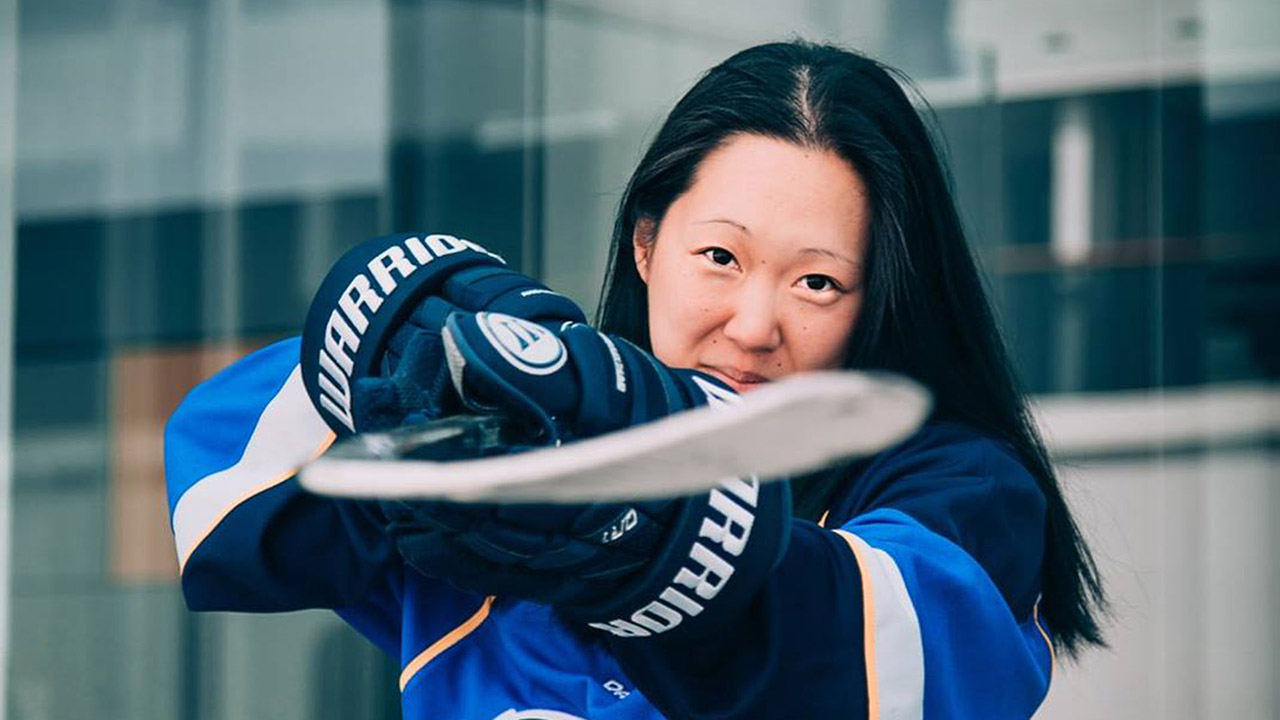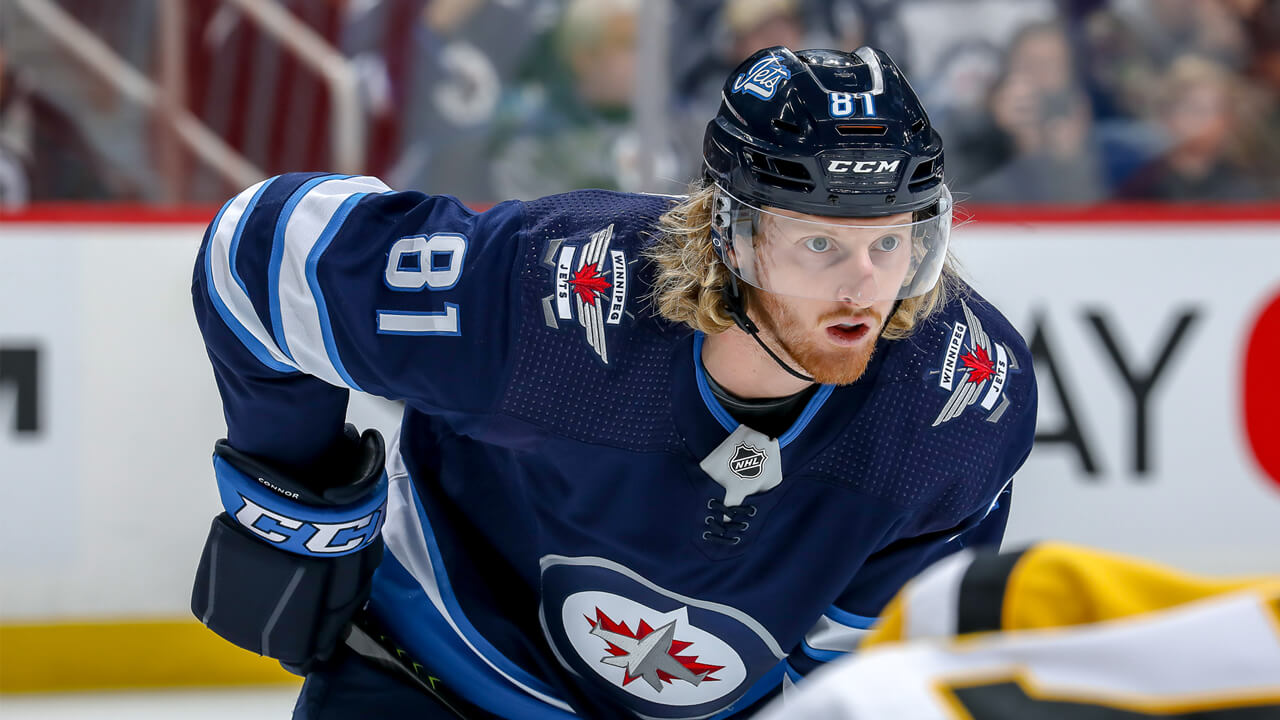It’s a trope of the Stanley Cup spring: a player making it to the Final for the first time, only to fall short of the championship and come away with the belief that he’ll be back, that he’ll get another shot — that next time, he’ll get it right.
Only the next time doesn’t come. That first chance turns out to be the last. It even happens to Hockey Hall of Famers, like Eric Lindros.
Another trope of the NHL’s stretch run: a lightly considered team making a Cinderella run to the Final, riding a goalie standing on his head behind a bunch of unlikely over-achievers.
And then midnight strikes. The team that seemed like a story for the ages ends up on the wrong side of the handshake line. Happened as recently as the three years ago, when the Golden Knights got within three wins of the Cup right out of expansion.
These tropes apply not just to players and teams but to coaches, too. Consider the case of Paul Maurice of the Winnipeg Jets. Maurice made it to the Final just short of two decades ago with the 2001–02 Carolina Hurricanes, only to run into a Detroit Red Wings team with a lineup that featured a bunch of future Hockey Hall of Famers and Cup rings by the dozen. His Canes lost in five.
“Did I think that our teams would be back [in the Final] at some point?” Maurice asks now, rhetorically and confessionally. “You can’t help it.” Call that thinking what you like — wishful, magical or whatever — but 19 years later, Maurice is still looking for a second chance.
Many figured the Jets were a good bet three years back — Winnipeg finished the season 32 games over .500 and Mark Scheifele’s play took off in the spring as he set a single-season NHL record for playoff goals on the road in the Western Conference Final against Vegas. The Golden Knights bumped off the Jets, though, and since then it’s been a case of diminishing performance, diminishing returns and diminishing expectations. Winnipeg was knocked out by eventual Stanley Cup champions St. Louis in ’19 and then fell in the qualifying round to Calgary last summer. Maurice doesn’t read too much into last year’s disappointments. “I can’t describe what it was like playing games in the bubble in an empty arena other than to say it didn’t feel like playoff hockey at all,” he says.
The only real comparable, of course, might be the weeks that lie ahead.
This spring, the Jets are staggering into the playoffs. Just a few weeks ago, they looked poised to pass Toronto in the North Division standings; a subsequent swoon had Montreal breathing down their necks for the third seed. On form, Winnipeg rates as a significant underdog against the surging Edmonton Oilers. The Jets are nobody’s fashionable pick for a deep run.
Then again, the same was true of the Hurricanes back in the spring of 2002. The Stanley Cup Playoffs are where form, expectations and best-laid plans go to die. Maurice says that he drew lessons every career playoff berth, especially his three conference finals runs and that trip to Final almost two decades ago — the one he hopes he’ll be able to describe someday as his first trip.
LESSON ONE: UNLIKELY HEROES ON THE BOTTOM HALF OF THE ROSTER
The ’02 Hurricanes made the Final with one future Hall of Famer, the 38-year-old Ron Francis, and a couple players who ranked in the league’s top 10 per cent: Rod Brind’Amour and Jeff O’Neill. Their run owed a lot to journeymen such as Sean Hill, Bret Hedican and Aaron Ward playing far above their presumed stations. “I had a third line of Marty Gelinas and two 21-year-old — Josef Vasicek, who had played junior in the Soo the year before, and Jaroslav Svoboda, who had played 10 regular-season games for us,” Maurice says. “Our players got used to playing a really tight game because we had to.”
In Maurice’s second stint with Carolina, the Hurricanes beat the Bruins in Game 7 in Boston in the second round to make the ’09 Eastern Conference Final. “Again, it was a player that you’d normally overlook in that game who did the damage, Scott Walker,” Maurice says.

In looking at Maurice’s Jets team this spring, it’s easy to find third- and fourth-liners more likely to be impactful than Vasicek and Svoboda, guys who might reprise a star turn like Walker’s. In this number, you could include the likes of centre Adam Lowry, recently signed to a five-year extension, and right-winger Mason Appleton, who enjoyed a breakthrough season. Says one NHL scout: “If you’re the Oilers, you’re looking to get McDavid and Draisaitl on the ice against [players down the Jets roster]. And you’re counting on some of those guys on the third and fourth line to be out on the penalty kill against some really elite talent.” Calling the Oilers’ powerplay “elite” doesn’t do the unit justice — they were far and away the league’s best this season. Any slowing down of Edmonton in five-on-four or five-on-three will be star turns for Jets players who aren’t the household names.
LESSON TWO: A MASKED MARVEL, EVEN TWO
A playoff team might out-perform its goaltender for a night or two, but that’s not a recipe for a long run. Teams that make the Final rarely make it despite goaltending. (See the ’97 Flyers as an exception on that one.) Instead, it divides neatly into teams that make the Final with good goaltending and teams that make the Final because of great goaltending.
Looking at the CVs of the goalies going into this year’s playoffs, the Jets seem as well set up as anybody with Connor Hellebuyck. The goaltender’s pedigree is impeccable, a First Team All Star in 2020, a Second Team selection two years before. He led the NHL in minutes played this year and though his save percentage dropped to .916 — middle of the pack in the league — from .922 last year, it should surprise no one if Hellebuyck steals games and maybe a series.
Then again, pedigree or form can also be thrown out the window if necessary. “We had two goaltenders and we used both,” Maurice says of the ’02 Canes. “We play the Wings in the Final and they have Dominik Hasek, maybe the greatest of all time, and we’ve got Arturs Irbe and Kevin Weekes. You’re not supposed to be able to [use goaltenders in tandem] in the playoffs but there are no hard and fast rules about what will work.”
Maurice went way out of the box with his goaltending choices — both were journeymen who inspired little confidence. Irbe was mostly memorable for white leg pads that looked like overstuffed pillows. Weekes, in fact, played in only two regular-season games for the Hurricanes after coming over before the trade deadline. The pair played like Hall of Famers for a couple of months, though: Irbe winning 10 games with a GAA of 1.67 and a save percentage of .938, while Weekes picked up three wins against two losses with a 1.62 goals-against and a .939 save percentage.
Not to say that Maurice will be looking to split games between Hellebuyck and back-up Laurent Brossoit against the Oilers, but stranger things have happened. Although not much stranger.
LESSON THREE: THE VALUE OF THE ROLL
Back in ’02, Maurice was in his sixth year behind the bench but still considered a boy coach — understandable, given that he became the second youngest coach in league history when, at 28, he was promoted from assistant to the head man with the Whalers early in the 1995–96 season. In his first five years with the Hurricanes, Maurice’s teams had made it to the playoffs only twice, winning a total of four playoff games. Results like that usually cost a coach his job, but the Hurricanes’ principle owner in those days, Peter Karmanos Jr., was unusually patient. Franchise relocation likely also bought him time, a second honeymoon as it were.
Carolina’s first couple of trips to the post-season were hard won. “The big clubs like the Red Wings had their spots locked up and the challenge for coaches on those teams was keeping the players’ attention,” Maurice says. “We were playing just to get into the post-season the last week of the season. We were scratching and clawing. We were in no position to rest our veterans [going into the playoffs]. [In ‘2002] we got on a roll.”
This year, Maurice’s team is limping into the playoffs, effectively an anti-roll. No doubt there were obvious contributing factors, the two most obvious being the late-season loss of Nikolaj Ehlers to an upper-body injury and Pierre-Luc Dubois’s transition from his natural position of centre to right wing after coming over in the Patrik Laine trade. Maurice says that he expects Ehlers to be back in time for the series against the Oilers and that Dubois has adjusted to the wing. “It’s been such a discombobulated season, what with the division alignment, the schedule, cancelled games, everything,” Maurice says. “For [players and their individual games] the changes in their roles and challenges they face get a bit lost in the mix.”
A roll doesn’t necessarily have to come out of success late in the regular-season, though, Maurice suggests. “In ’02, we started winning games in overtime and it’s a different, more meaningful momentum and belief that players get out of that,” he says. Which is to say, that a swoon through the last month of the regular season can get wiped from memory by a win in Game 1 in the opening round.
LESSON FOUR: THE FREEDOM OF LOW EXPECTATIONS
There is, of course, one potential advantage to the Jets’ late-season stumble: “Back [in 2002] there was a certain freedom [the Hurricanes] felt coming in under the radar,” Maurice remembers. “Any pressure on them to perform came from within and not from outside.”
Expectations for the 2002 Hurricanes and the 2021 Jets would seem like an absolute wash.

2002: The pre-season betting line on the Hurricanes winning the Cup was for longshot lovers only: +4000. Oddsmakers gave 18 other teams a better chance at the championship. The Southeast was considered the weakest divisions by a mile. (In this most unbalanced and utterly makeshift season, some fans and commentators have lodged the same knock against the North Division.) Despite landing the third seed in the Eastern Conference, the Hurricanes would’ve found few, if any, who thought they were the third best team on their side of the draw. In fact, their 91 points were seventh best in the East and the rest of their division missed the post-season completely. It looked like the Hurricanes were a very average team that benefitted from an unbalanced schedule.
2021: Those establishing the pre-season lines this year gave 19 teams a better chance of raising the Cup than the Jets. At season’s end, those same oddsmakers rank only Nashville as a longer shot at raising the Cup than the Jets. (Winnipeg and Montreal are in or around a +2800, the Predators +3500, and Colorado the favourite at +450.)
LESSON FIVE: A LEVEL PLAYING FIELD
Maurice’s Hurricanes coming up short in the Final wasn’t foreordained. They managed to win Game 1 in Detroit on a Ron Francis overtime goal, which pulled back home-ice advantage. The series turned with Carolina’s hard-luck 3–2 loss in triple overtime in Game 3. Carolina led 1–0 and 2–1 in the game, Brett Hull tying it up with a little more than a minute left in the third period. “We never recovered from that loss,” Maurice says. “Detroit could have lost that game or even gone down two games, but they wouldn’t panic. They had so much experience and knew how hard it is to win.”
The ice wasn’t tilted in Detroit’s favour in the Final but the payroll certainly was. It was the era of the big market/small market divide. “The NHL seems a lot different today,” Maurice says. “That Detroit lineup had nine Hall of Famers, and that’s not including Pavel Datsyuk. The six Wings on the ice for the opening faceoff in Game 1 made more than our entire lineup.”
Eighth seeds have won a Cup (Los Angeles in 2012) and made the Final (Edmonton in ’06, Nashville in ’17) in the salary-cap era — the whole idea of a financially balanced league was parity and it seems to have had the desired effect. “Everyone is closer now than back [in the pre-cap era] and everyone knows it,” Maurice says.
It’s a message that the Jets can take heart in this spring, and one that any underdog hopes the favourites forget.



